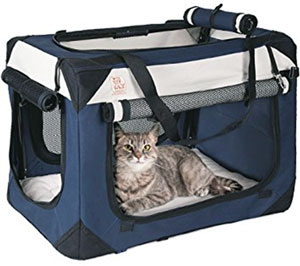
Australians love their cats, and more households are getting cats each year. But research suggests that compared to dogs, cats still aren’t getting the veterinary care they need and deserve.
Regular Veterinary care is the best way to keep cats healthy and happy. There are 3.8 million cats in Australia, but they are less likely to receive regular health checks than dogs. In 2016, approximately 80% of dogs were examined by a Vet at least once, but this was the case for only 65% of cats. This means that every year, over 1.33 million Australian-owned cats do not receive any Veterinary attention.
Vet care for cats: Myths vs Facts
The Australian Veterinary Association (AVA), American Association of Feline Practitioners (AAFP) and the International Society of Feline Medicine (ISFM) all recommend at least one annual wellness exam for cats, with more frequent examinations for older cats, or cats with medical or behavioural conditions.
Unfortunately some misconceptions still exist regarding cats and how often they should visit the vet.
MYTH: Cats are more self-sufficient than dogs.
FACT: Cats require the same amount of attention as dogs. Food, water, a clean litter tray and regular Veterinary care are vital factors for feline health.
MYTH: Cats are healthier and experience fewer health problems than dogs.
FACT: Cats are no more or less healthy than dogs and require annual health checks just as much as dogs do.
MYTH: Health problems come from outside and don’t affect indoor cats.
FACT: Even cats with no outdoor exposure can still get sick and have health conditions that require attention, including dental health, osteoarthritis, chronic kidney disease, weight management and even diabetes and cancer. Parasites such as fleas can also be passed on from other pets.
MYTH: Cats will show signs of being sick just like dogs do.
FACT: Cats are very adept at hiding the symptoms of poor health. Regular examinations by trained veterinary professionals are the best way to ensure your cat’s health is maintained.
MYTH: Veterinary visits are more stressful for cats than dogs.
FACT: With proper preparation, you can minimise the discomfort of a visit to the veterinary clinic.
Preparing your cat for vet visits
A trip to the vet can be more stressful for cats than for dogs, but with some preparation for the unique needs of cats you can help make your visits much easier.
Buy a carrier and practice at home
First, you’ll need to choose a carrier. Top-loading carriers make it easier to place your cat inside, or carriers with a top and side opening have additional versatility. If your carrier has a removable top, your cat may feel more secure if they can remain inside throughout the examination.
Once you have your carrier, practice at home with your cat:
- Leave the carrier out for several days before the appointment so your cat gets used to it.
- Put treats, toys, blankets and a favourite person’s clothes in the carrier for a comfortable and familiar environment.
- Reinforce your cat’s positive associations with the carrier using calm praise.
- Never dump your cat out of the carrier – either let them walk out or gently remove them from the carrier.
- Practice regular care such as brushing, nail trimming and teeth brushing at home.
- Touch your cat’s face, ears, feet and tail at home so they will be used to similar procedures at the clinic.
Tips for car trips
- Always put your cat in a carrier when travelling in the car – it’s safer for you and your cat.
- A synthetic feline pheromone in the carrier may help your cat stay calm during transit.
- Take your cat for a few short car trips to build familiarity.
- Do not feed your cat for several hours before travelling to reduce the risk of vomiting.
- After each successful car trip, reward your cat with positive attention and treats.
For more feline facts and information on cat health, visit www.haveweseenyourcatlately.com.au.
Article courtesy of Boehringer Ingelheim Animal Health
Last updated on 1 January 2018